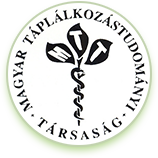Hungary information
Hungary is a landlocked country of 93,030 km2 area in Central Europe, in the middle of the Carpathian Basin. It is bounded on the north by Slovakia; on the northeast by Ukraine; on the east by Romania; on the south by Serbia, Croatia, and Slovenia; and on the west by Austria. Plains and gentle hills of the Pannonian Basin dominate its surface. Some inselbergs form 600-900 m high mountain ranges. Temperate grasslands, agricultural land, meadows and non-coniferous forests characterise the landscape. Two major rivers: the Danube and the Tisza flow across the country from north to south. Lake Balaton, the biggest lake in Central Europe is a favourite target of tourists because of its warm water and nice landscape.
During its more than 1000 years of existence Hungary has experienced every possible historical ups and downs. It was several times invaded by different empires, occupied neighbouring areas, suffered several subdivisions, won battles and campaigns, lost world wars, survived civil wars and fallen revolutions. Since 2004 Hungary has been a member of the European Union.
Hungary has a slowly diminishing population of 10 million. The capital: Budapest is the most densely populated area with its 1.7 million inhabitants. Major cities of over 100,000 inhabitants are Debrecen, Miskolc, Szeged, Pécs, Győr, Nyíregyháza, Kecskemét and Székesfehérvár.
The dominant Hungarian (Magyar) population arrived from the east, from the Ural region. Its Finno-Ugric language and its traditional folklore is different from those of the surrounding Slavic, German and Romanian populations. Today’s Hungary hosts ethnic minorities (altogether 10%) including Roma (Gipsies), Germans, Slovakians, Croatians, Serbs, Romanians etc. Nearly 3 millions Hungarians live outside Hungary as minorities, mostly in the immediate neighbourhood.
From the wide range of travel and tourism information sites on Hungary see e.g. the official Hungary tourism site or the site of the Lonely Planet.
Szeged - History
Szeged and its area have been inhabited since ancient times. Ptolemy mentions the oldest known name of the city: Partiscum (Ancient Greek: Πάρτισκον). It is possible that Attila, king of the Huns had his seat somewhere in this area. The name Szeged was first mentioned in 1183, in a document of King Béla III.
In the second century AD there was a Roman trading post established on an island in the Tisza, and the foundations of the Szeged castle suggest that the structure may have been built over an even earlier fort. Today only one corner of the castle still remains standing.
During the Mongol invasion the town was destroyed and its inhabitants fled to the nearby swamps, but they soon returned and rebuilt their town. In the 14th century, during the reign of Louis the Great, Szeged became the most important town of Southern Hungary, and – as the Turkish armies got closer to Hungary – the strategic importance of Szeged grew. King Sigismund of Luxembourg had a wall built around the town. Szeged was raised to free royal town status in 1498.
Szeged was first pillaged by the Ottoman Army on 28 September 1526, but was occupied only in 1543, and became an administrative centre of the Ottomans (see Ottoman Hungary). The town was a sanjak centre first in Budin Eyaleti (1543–1596), after in Eğri Eyaleti. The town was freed from Turkish rule on 23 October 1686, and regained the free royal town status in 1715. In 1719, Szeged received its coat of arms (still used today) from Charles III. During the next several years, Szeged grew and prospered. Piarist monks arrived in Szeged in 1719 and opened a new grammar school in 1721. Szeged also held scientific lectures and theatrical plays. These years brought not only prosperity but also enlightenment. Between 1728 and 1744 witch trials were frequent in the town, with the Szeged witch trials of 1728–29 perhaps being the largest. The witch trials were instigated by the authorities, who decided on this measure to remove the problem of the public complaints about the drought and its consequences of famine and epidemics by laying the responsibility on people among them, which had fraternized with the Devil. In 1720, the ethnic Hungarian population of the town numbered about 13000 to 16000, while the number of the Serb inhabitants was 1300.
Szeged is known as the home of paprika, a spice made from dried, powdered capsicum fruits. Paprika arrived in Hungary in the second half of the 16th century as an ornamental plant. About 100 years later the plant was cultivated as an herb, and paprika as we know it. Szeged is also famous for their szekelygulyas, a goulash made with pork, sauerkraut and sour cream. And also famous for their halászlé, fish soup made of carp and catfish.
The citizens of Szeged played an important part in the Hungarian Revolution of 1848. Lajos Kossuth delivered his famous speech here. Szeged was the last seat of the revolutionary government in July 1849. The Habsburg rulers punished the leaders of the town, but later Szeged began to prosper again; the railway reached it in 1854, and the town got its free royal town status back in 1860. Mark Pick's shop – the predecessor of today's Pick Salami Factory – was opened in 1869.
Today the inner city of Szeged has wide avenues. This is mainly due to the great flood of 1879, which wiped away the whole town (only 265 of the 5723 houses remained and 165 people died). Emperor Franz Joseph visited the town and promised that "Szeged will be more beautiful than it used to be". He kept his promise, and during the next years a new, modern city emerged from the ruins, with palaces and wide streets.
After the First World War Hungary lost its southern territories to Serbia, as a result Szeged became a city close to the border, and its importance lessened, but as it took over roles that formerly belonged to the now lost cities, it slowly recovered. Following the Loss of Transylvania to Romania, University of Kolozsvár (now Cluj-Napoca), moved to Szeged in 1921 (see University of Szeged). In 1923 Szeged took over the role of episcopal seat from Temesvár (now Timișoara, Romania). It was briefly occupied by the Romanian army during Hungarian-Romanian War in 1919. It also became a center for right-wing forces which would install Miklós Horthy as the country's new leader after the overthrow of the Hungarian Soviet Republic. During the 1920s the Jewish population of Szeged grew and reached its zenith.
Szeged suffered heavily during World War II. 6,000 inhabitants of the city were killed, In 1941, there were 4,161 Jews living in Szeged. After, March 19, 1944 German occupation, they were confined to a ghetto together with the Jews from surrounding villages. In June, 1944, the ghetto was liquidated. The Nazis murdered the larger part of the 8,500 and some were forced into forced labor in Strasshof Labor camp, Austria.[12] Szeged was captured by Soviet troops of the 2nd Ukrainian Front on 11 October 1944 in the course of the Battle of Debrecen. During the communist era, Szeged became a centre of light industry and food industry. In 1965, oil was found near the city.
In 1962, Szeged became the county seat of Csongrád. Whole new districts were built, and many nearby villages (e.g. Tápé, Szőreg, Kiskundorozsma, Szentmihálytelek, Gyálarét) were annexed to the city in 1973 (as was a tendency during the Communist era).
Today's Szeged is an important university town and a tourist attraction.



